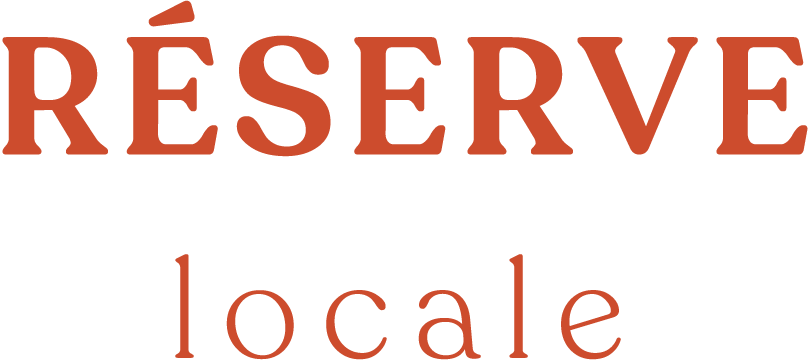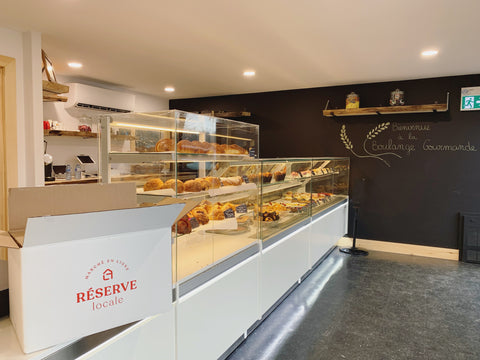If someone says “frozen product” to you, does that make you think of a bland, unhealthy, expensive food full of preservatives?
Frozen foods in grocery aisles are often ultra-processed and low in nutrients. It's not for nothing that we associate frozen food with lower quality. However, it is possible to benefit from the benefits of freezing with raw, unprocessed foods (such as meat, poultry, fish and seafood).
So, let's debunk these myths together and change this bad reputation of frozen foods so that you can use your freezer to your advantage.
Myth #1: Freezing and freezing are the same thing
Although used interchangeably in everyday language, “freezing” and “deep-freezing” are two very distinct terms.
Freezing is a complex industrial technique which allows products to be suddenly cooled by exposing them to very low temperatures of up to -50°C. This technique allows the water in food to be transformed into ice very quickly.
As for freezing, it is a slow process that allows frozen foods to be kept at a low temperature before consumption. It cools food more slowly and at a lower temperature than freezing.
Myth #2: Frozen foods are full of preservatives
It's not necessarily true that frozen foods are full of preservatives. Frozen foods may contain preservatives, but this depends on the type of food and the producer.
In our case, our producers use natural preservation techniques, such as flash freezing, which do not involve the use of preservatives.
It is important to read frozen food labels and understand the ingredients used in them. Avoid preservatives and instead choose foods that have been prepared using natural preservation methods.
Myth #3: Frozen foods are always expensive
There is a myth that frozen products are more expensive than fresh products. And yet, this is not always the case. Frozen products are collected and processed at the most convenient times and in the most appropriate season. Indeed, frozen foods can be an economical and quick way to eat healthy foods without having to pay large sums for out-of-season products.
Myth #4: Frozen products are less tasty than fresh products
Frozen produce can be just as tasty as fresh produce. Rapid freezing techniques help preserve the flavor of foods. Additionally, foods such as fruits and vegetables are often picked at the peak of their freshness and are frozen within hours. They therefore do not have time to lose this freshness and can keep it until they arrive on the shelves.
Myth #5: Freezing destroys food texture
Our desire to offer quality products to our customers has led us to choose freezing methods by individual freezing, a method recommended by freezing experts. Our foods are stored individually in large freezing chambers which reduce the temperature of the food much more quickly than is possible in a freezer of the type found at home. This method of freezing maintains the texture and taste of foods, as well as their nutritional value, and prevents foods from becoming mushy when we cook them.
Myth #6: Frozen foods are less nutritious and healthy than fresh products
At one time it was possible to say that this myth was not completely false. Previously, it was true that the quality of frozen meals in stores could seem questionable, but the processes have evolved over time. Unfortunately, this myth has remained in people's minds.
Most people assume that fresh is always better, and that frozen is only there for convenience and convenience. But it turns out that freezing produce helps preserve vitamins and minerals that would otherwise be lost if stored at room temperature or in the refrigerator.
Several studies compare the nutrient content in fresh and frozen foods. The results of these studies demonstrate that there is no significant difference between the vitamin content of fresh and frozen products. On the day they are purchased, frozen and fresh foods have the same nutritional quality. After five days in the refrigerator, fresh produce contains fewer vitamins and nutrients than other frozen products.
Additionally, fresh fruits and vegetables are often picked before they are ripe, then packaged, shipped and stored. It can take several days, or even more than a week, between the harvest and your plate. During this time, food loses nutrients. In fact, fresh foods typically lose most of their nutrients, especially vitamins and minerals, within three days of picking. Frozen foods, on the other hand, are harvested at peak ripeness and flash frozen within hours.
Choosing frozen food is not a bad option for your health! You may even get an even more nutrient-dense product. Frozen food is ideal for saving money and enjoying your favorite products in season and out of season.
Myth #7: Frozen products have the same expiration date as fresh products
The shelf life of frozen products is generally longer than fresh products because freezing slows the growth of bacteria and other microorganisms that cause food spoilage.
Frozen products have an expiration date to respect, just like fresh products. Although the expiration date of frozen products is longer than that of fresh products, it depends on the type of product and storage conditions.
Our freezing and vacuum packaging techniques keep most of our products frozen for more than 16 months. Here is our short, more complete guide which indicates the shelf life according to the categories of our products.

Myth #8: Frozen products are all processed
Although some frozen foods are processed, such as frozen pizzas or prepared meals, there are many unprocessed frozen foods such as meats, fish, fruits and vegetables.
Over the years, consumers have become more and more demanding when it comes to food. Producers therefore set to work to provide foods that were as minimally processed as possible.
For our part, we do not offer any processed products on our online store. In addition, all our products are free of growth hormones and antibiotics.
Myth #9: All frozen foods are high in sodium
Sodium occurs naturally in foods, but it can also be used as a preservative. This means that a large amount of sodium is added to processed foods.
But because freezing, itself, is a preservative, adding sodium is not always necessary to extend the shelf life of frozen foods. In fact, frozen products often contain no added sodium, making them a healthier alternative.
For our part, no added sodium is present in our products. The freezing methods used are natural and do not require the addition of preservatives.
Myth #10: Any freezer burn on frozen foods means the food can no longer be eaten and must be thrown away
Freezer burn occurs when frozen food comes into contact with air. This often happens when products have been poorly packaged. If you see these burns on your food, it does not mean that it is unsafe to eat or that it has lost its flavors, and that you should throw it away. The food is completely suitable for consumption. All you have to do is cut or scrape off the affected part of the food.
Prevention is still the best practice. Make sure to wrap your food well if you are making it yourself and limit trips to the freezer.
To view our products, click here .






Comments (0)
There are no comments for this article. Be the first to leave a message !